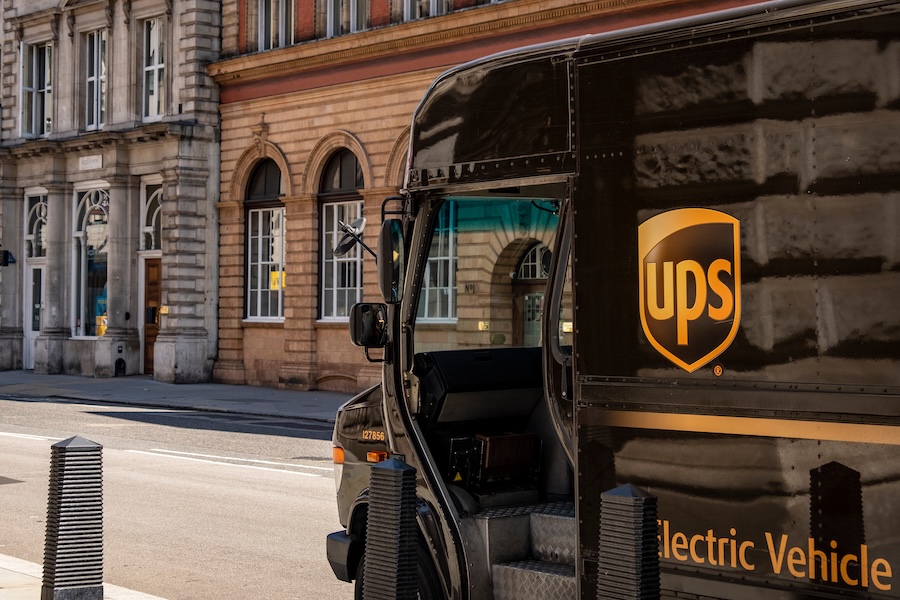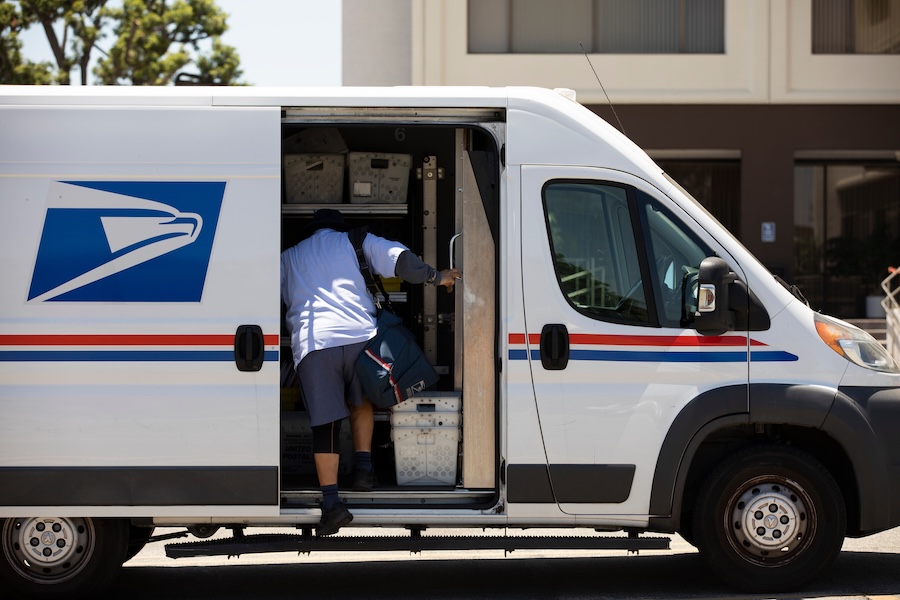
It’s that time of the year again—peak season is upon us. And with it, pesky peak surcharges have arrived. For ecommerce merchants, these inevitable temporary surcharges cause a surge in shipping costs during a vital time when brands are trying to secure sales and boost net profit before the end of the year.
But, not all hope is lost. By understanding these surcharges and implementing strategies to mitigate them, retailers can control shipping costs and keep profits healthy during the holiday season.
Let’s dive in!
Why do carriers apply peak season surcharges?
The holiday season is the number one retail event of the year, and the 2024 peak season shows no signs of slowing down. According to Statista, the 2024 holiday shopping season is expected to generate $960 billion in retail sales, a 4% increase from 2023’s peak.
Plus, there’s an added sense of urgency—this season is actually shorter than previous years, with only 27 days between Black Friday and Christmas Day.
This means more shipments going out within a shorter timeframe. With such a massive influx of demand on carriers, it’s no surprise that they implement demand surcharges on top of regular shipping rates to offset the costs it takes to handle increased volume and ensure timely deliveries.
Understanding when these surcharges apply can help merchants plan for increased expenses, manage their budgets, and optimize ecommerce shipping strategies.
Overview of Peak Season Surcharges for 2024
UPS

UPS Ground Residential, Air and SurePost packages
- Start Date: October 27th, 2024
- End Date: January 18th, 2025
- Surcharge: $0.25 to $2 per package
Certain UPS Ground Residential, Air Residential and SurePost packages for qualifying customers
- Start Date: October 27th, 2024
- End Date: January 18th, 2025
- Surcharge: $1.50 to $8.25 per package
For UPS, higher surcharges only apply to customers shipping over 20k packages per week. The surcharge is determined by your ‘baseline,’ which UPS defines as your average weekly shipping volume in June 2024. However, if your average weekly volume in September is less than 80% of your average June volume, UPS will use the September volume as your baseline. Similar to last year’s peak season, there are six tiers ranging from 105% to >400% of baseline volume.
FedEx

FedEx Ground Economy Package Services
- Start Date: October 28th, 2024
- End Date: January 19th, 2025
- Surcharge: $1.90 to $3.15 per package
** New for 2024:
First Overnight, Priority Overnight, Standard Overnight, 2Day, 2Day A.M., Express Saver (excluding One Rate packages)
- Start Date: October 28th, 2024
- End Date: January 19th, 2025
- Surcharge: $1 to $2 per package
FedEx Ground residential shipments, FedEx Home Delivery residential shipments
- Start Date: October 28th, 2024
- End Date: January 19th, 2025
- Surcharge: $0.30 to $0.55 per package
Ground, Home Delivery, First Overnight, Priority Overnight, Standard Overnight, 2Day, 2Day A.M., Express Saver (excluding One Rate packages)
- Start Date: October 28th, 2024
- End Date: January 19th, 2025
- Surcharge: $1.45 to $8.25 per package
FedEx introduced two new demand surcharges for the 2024 peak season as well as a ‘Residential Delivery Charge’ that applies to enterprise-level customers (merchants who ship more than 20,000 residential and Ground Economy packages). Similar to UPS, the pricing for this tier will be determined based on their baseline (June 2024) shipping volume and how much their peak volume deviates from that.
** The above FedEx demand surcharges are in addition to the following surcharges that went into effect in late September.
U.S. Package Services, FedEx International Ground Shipments
- Start Date: September 30th
- End Date: January 19th, 2025
- Surcharges:
- Additional Handling Surcharge: $7.75 to $10 per package
- Oversize Charge: $84.50 to $100 per package
- Ground Unauthorized Package Charge: $450 to $500 per package
US Postal Service (USPS)

Demand surcharges:
- Start Date: October 6th, 2024
- End Date: January 19th, 2025
- Ground Advantage: 6.4% average increase
- Priority Mail: 5.5% average increase
- Priority Mail Express: 4.9% average increase
While USPS opted for no peak season surcharges in 2023, they’ve re-introduced them this year (and earlier than most carriers) in effect from October 6th. These temporary rate adjustments are based on weight per package and distance traveled, adding anywhere from $0.30 to $7.00 for Priority Mail, USPS Ground Advantage, and Priority Mail Express services.
Reduce 2024 Peak Season Fees: 6 tips for success
While it can feel like every peak season surcharge is burning a hole in your brand’s wallet, practical strategies exist to offset fees! Consider the below tips to ensure a happy and healthy peak season.
Keep your DIM weight down
Have you ever received a box within a box within a box? Shipping fees take many forms, but dimensional weight is most certainly one of them. DIM weight is the primary way that shipping carriers charge shipping costs, taking into account the weight and the dimension of a package.
Merchants who utilize smaller boxes or mailer envelopes to reduce packaging dimensions will lower costs on each shipment and reduce the likelihood of additional handling fees. Learn how to calculate your dimensional weight here.
Incentivize early holiday shopping
The easiest way to avoid peak season surcharges is to encourage your customers to shop before they hit (easier said than done!) Try incentivizing purchasing in early September by offering early-bird discounts or promotions. Early shipments can avoid the highest surcharges that apply during peak demand weeks, helping to reduce costs while ensuring timely delivery.
Compare rates across multiple carriers
Sticking with one carrier throughout the holiday season means you’re tied to their particular surcharges. Instead, compare rates across UPS, FedEx, USPS, and regional carriers to determine which rates make the most sense for each package and destination. To make this process more seamless, leverage shipping rate shopping software that searches for the most cost-effective rate based on parameters like carrier selection, transit time, and delivery promises.
Consider multinode fulfillment
For brands that have a nationwide audience and a high volume of orders, it may make sense to consider a multinode fulfillment approach to get closer to customers. By ensuring shorter delivery distances with strategically located fulfillment centers, merchants can reduce costs and avoid surcharges associated with extended or remote area deliveries.
Determine your free shipping threshold
Every shipment counts when a brand is footing the shipping bill. Setting free shipping thresholds is a surefire way for retailers to increase average order value and offset higher shipping costs. Plus, it encourages customers to spend more at one time, reducing the number of shipments.
Setting a free shipping threshold works best when merchants determine their Goldilocks number, not too low, not too high—just right. A shipping threshold that’s too high could potentially turn customers away, and one that’s too low won’t provide any profit. To best determine your free shipping threshold, determine your typical average order value, and ensure the threshold is higher (but not too much higher!).
Explore omnichannel strategies
To truly reduce shipping distance and cost, retailers may want to explore omnichannel strategies such as buy online, pick up in-store (BOPIS). This completely cuts residential delivery charges out of the equation while speeding up the delivery process for customers.
For ecommerce merchants who don’t have their own retail stores, working with big-box retailers can be a great way to encourage BOPIS, offering customers more flexibility on how they want to receive their orders.
Navigating demand surcharges with ShippingTree
Navigating additional fees during peak season can be challenging, but with proper planning and strategic adjustments, ecommerce merchants can maintain profitability and have a healthy holiday shipping season.
Start with reviewing your shipping options, implementing early holiday promotions, and utilizing technology to streamline fulfillment. By taking proactive steps, ecommerce retailers can mitigate the impact of seasonal surcharges and keep their business competitive throughout the holiday season.
No matter the time of year, your 3PL partner should be able to help you optimize your shipping strategy. From a network of strategically located fulfillment centers to top-tier technology and operations that enable seamless shipping, your partner should make the holiday season easier and more cost-effective.
ShippingTree offers customizable rate shopping that enables merchants to search for the best rates based on unique parameters that align with their business needs—merchants can prioritize certain aspects of shipping, like speed or cost. Plus, with facilities in Los Angeles, Columbus, and Dallas, ShippingTree unlocks an affordable, tailored solution to your fulfillment needs.
Reach out to one of our shipping experts today to learn more.



